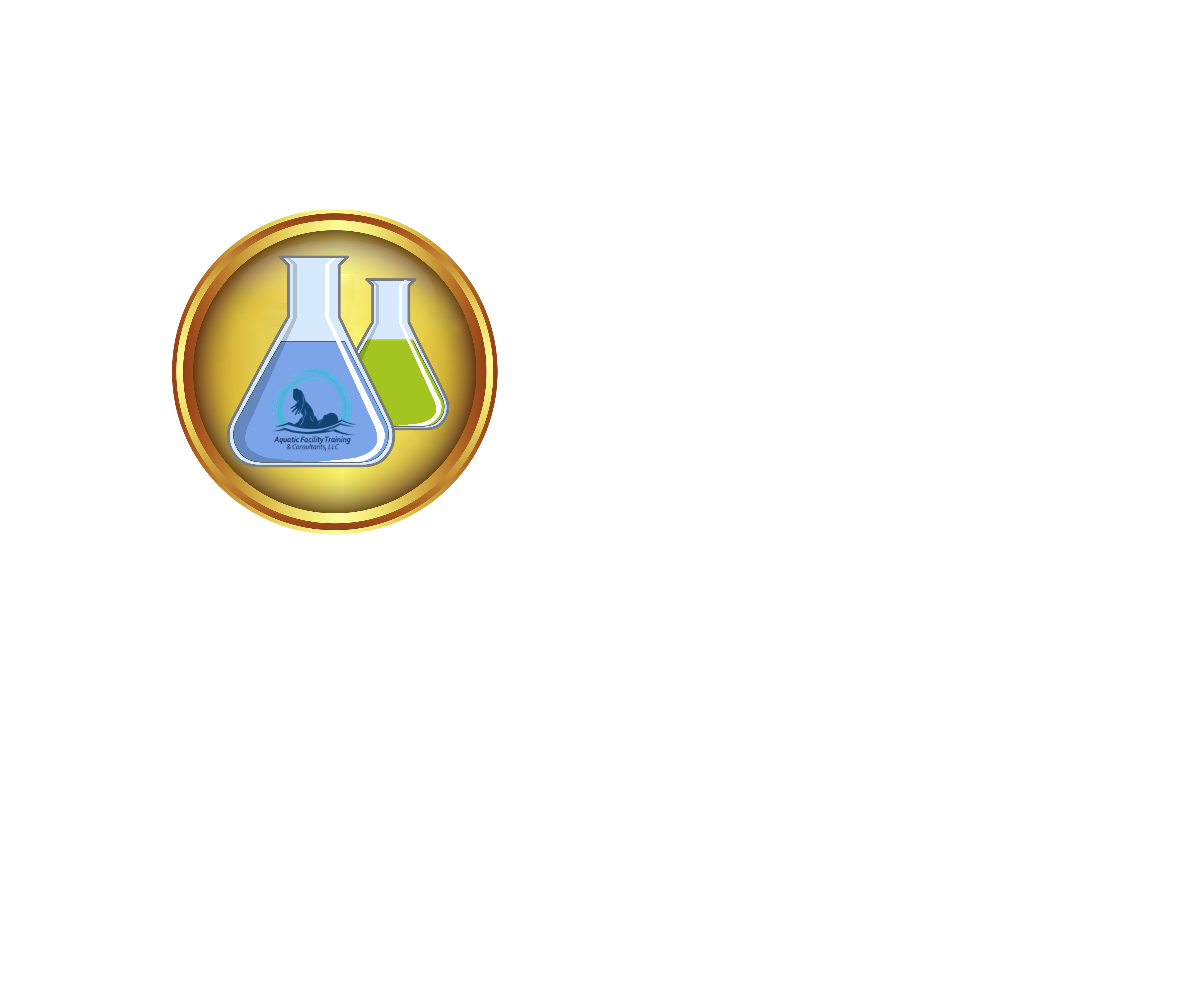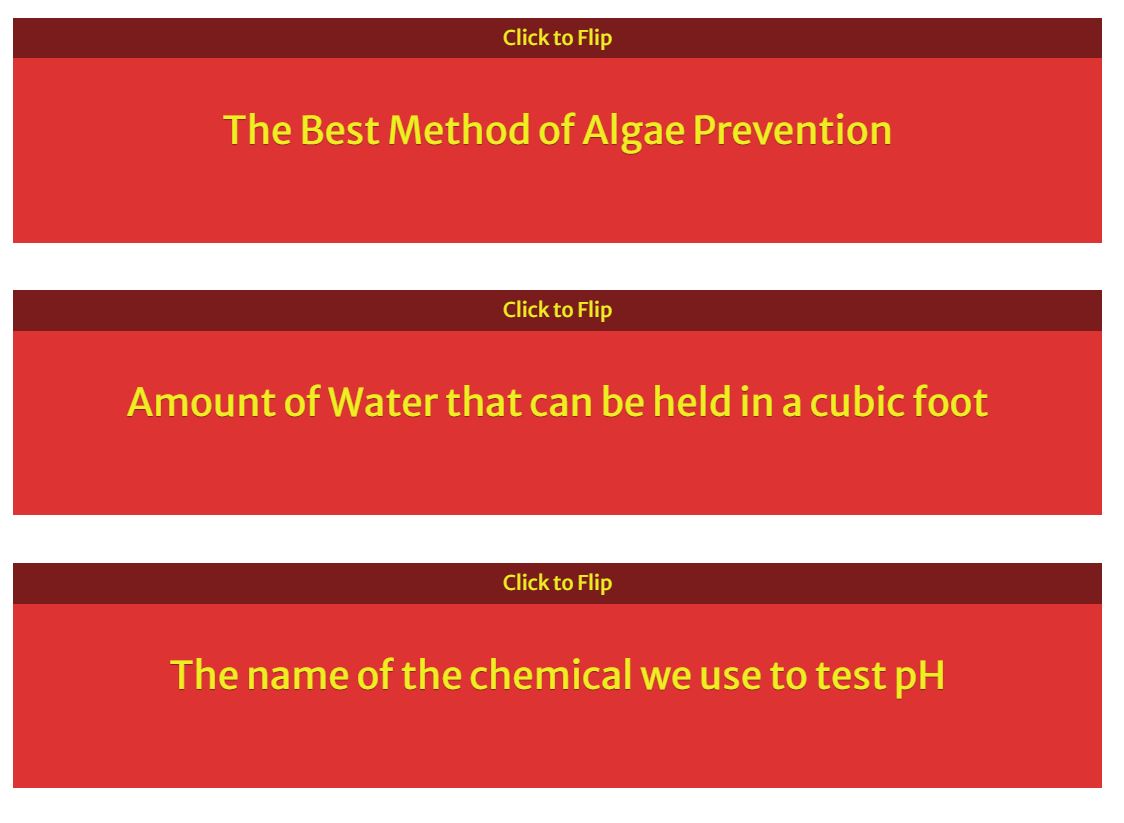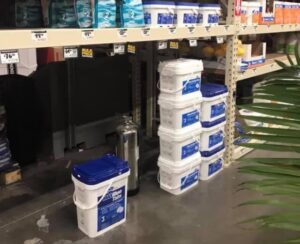Enrolled in a Certified Pool Operator Certification Class? Okay, maybe you haven’t been in school for a long time. I get it. Studying for a test is something we had to learn to do. Then, we practiced it over and over again until it just was. That is up until we left school. Now what? Those same methods we learned along the way still work, so we have created the CPO Class Flashcards.
Those methods we used back in the day still work. There is no reason that on top of taking the CPO Class that you should be expected to reinvent the wheel when it comes to studying for it. Honestly, in a two day class with so much information, that is brand new in many cases, being thrown at you, this class can be a lot like trying to take a sip of water from a fire hose. That’s why we at AFT&C have created an online self-guided study program that contains Videos, the CPO Class Flashcards you are about to see, a Practice CPO Math Test, and a Practice CPO Quiz. You can find these at AFT&C CPO Practic Test
CPO Flashcards
The only point at which a suction side leak will draw in air and drip water
The Mechanical Seal (Pump Seal)
The Best Method of Algae Prevention
Brushing Pool Walls & Floor
Amount of Water that can be held in a cubic foot
The name of the chemical we use to test pH
Total Chlorine - Free Chlorine =
This is what is used to lubricate the pump lid O-ring
A Silicone or Teflon based lubricant
The method a Saltwater pool uses to generate chlorine
The protozoa associated with a human solid stool
The only method of lowering pH that will increase the Total Alkalinity
The maximum amount of water that can pass through a DE filter
2 gpm per square foot of filter area
This law was established to help to prevent suction entrapment
Virginia Graeme Baker Pool and Spa Safety Act (VGB 2008)
This chemical neutralizes chlorine
The formula used to calculate the surface area of a circle
radius x radius x 3.14 = Surface Area
The recommended turnover rate for a public pool
The maximum recommended temperature for a spa
When should a vacuum DE filter be backwashed
When the vacuum gauge reads greater than 8 inches of mercury
The most common form of suction entrapment
Formula to convert ounces to pounds
The first thing you should do when someone poops in the pool
A swimming pool must maintain this amount of clearance
Four feet 100% of the way around the pool at all times
The part of the pump that throws the water
Sand returning to the pool is most likely do to what?
The only method of raising pH without affecting the Total Alkalinity
What is the correct amount of Diatomaceous Earth to add to a DE Filter?
1 1/4 pounds per 10 square foot of filter area
The method used to clean a sand filter
This device is designed to allow ground water to enter the pool as a "Pop-up" preventative
This can be caused by moving a valve handle while the pump is running
What is Cyanuric Acid used for?
To prevent UV degradation of chlorine by the sun
The number one cause of accidental death of children ages 1-4 years
The minimum height of a pool barrier
This recreational water illness is contracted by breathing contaminated mist
The formation and collapse of vapor in a liquid due to excessive vacuum
Best lighting to use for a water test
The light of the Northern horizon
The sector of the health department that regulates public pools
The type of feeder used for chlorine tablets
The chemical used to increase Total Alkalinity
The type of fire extinguisher that should be in a chemical storage area
The placement of a device that prevents machinery from being operated until that device is removed
Convert 640 ounces to gallons
640 ounces ÷ 128 = 5 gallons
Convert 800 ounces to pounds
800 ounces ÷ 16 = 50 pounds
Convert 50 meters to feet
50 meters x 3.28 = 164 feet
Calculate the Surface area of a rectangle that is 20 feet wide and 40 feet long
20 x 40 = 800 square feet
Calculate the average depth of a pool with a shallow end depth of 4 feet and a deep end depth of 8 feet
(4 ft + 8 ft) ÷ 2 = 6 ft average depth
Calculate the gallonage of water in a rectangle pool that is 20 feet wide and 40 feet long with a depth that is 4 feet in the shallow end and 8 feet at the deep end
20 x 40 x ((4+8) ÷ 2) x 7.5 = 36,000 gallons
Calculate the radius of a circle with a 12 foot diameter
Calculate the surface area of a circle with a 12 foot diameter
6 x 6 x 3.14 = 113.04 sq ft
Calculate the amount of water in a round pool with a 12 foot diameter and is 3 feet deep
6 x 6 x 3.14 x 3 x 7.5 = 2,543.4 gallons
Formula to convert inches to feet
Calculate the amount of water lost in a 20 foot wide rectangle pool that is 40 feet long that loses 1 inch of water
20 ft x 40 ft x (1 ÷ 12) x 7.5 = 499.8 gallons lost
Formula for calculating Turnover rate
Pool Gallons ÷ Flow Rate ÷ 60 = Turnover rate in hours
The height of the latch for the pool gate
Calculate the flow rate necessary for a 30,000 gallon pool to have a 6 hour turnover rate
30,000 ÷ 6 ÷ 60 = 83.33 gpm flow rate
The humidity in which the Natatorium must be maintained
Flow rate ÷ Filter Media Rate = Square Feet of Filter Required
Protozoa associated with a human diarrheal incident
Formula to Calculate required BTUs when sizing a heater
Pool Gallons x 8.33 x Degrees of desired Temperature change = Total BTUs required
The four types of energy loss
1. Evaporation 2. Convection 3. Radiation 4. Conduction
The chlorine level necessary to treat a fecal incident involving a solid stool
2 ppm (If it's Poo, it's 2)
Chlorine level necessary to treat a fecal incident involving diarrhea
20 ppm (If it's Runny, it's 20)
Formula to calculate Total Dynamic Head
(Pressure gauge reading x 2.31) + (Vacuum gauge reading x 1.13) = Total Dynamic Head
The CPO Certification Test is
Only 50 questions, all multiple choice, and open book You Got This!
Click button for CPO Practice Test ??????
Visit our group on Facebook to learn and share ideas with professionals like yourself Talking Pools FB Group








Hi
Does this work for european guys.
As long as you convert US measure to Metric and yield to the regulations established/enforced by your country’s Directorate-General of Health